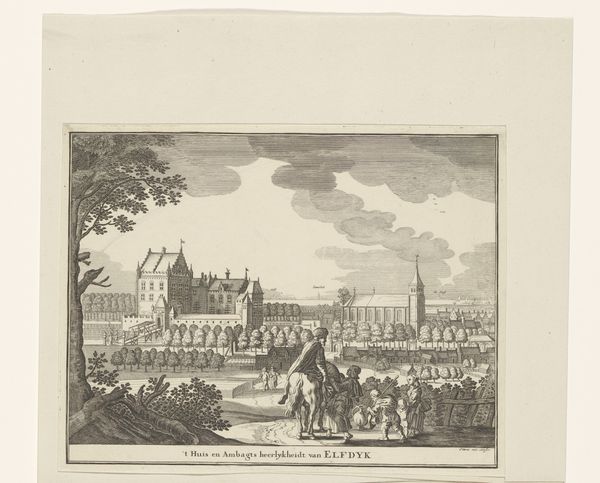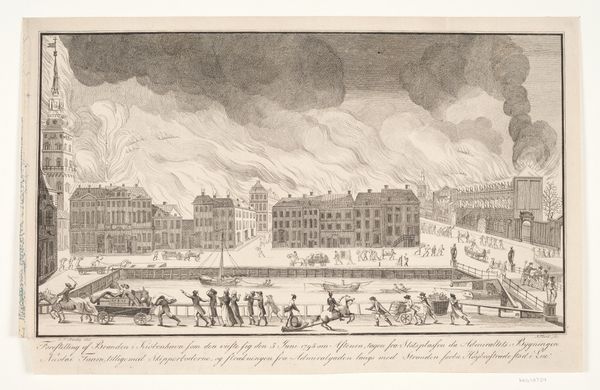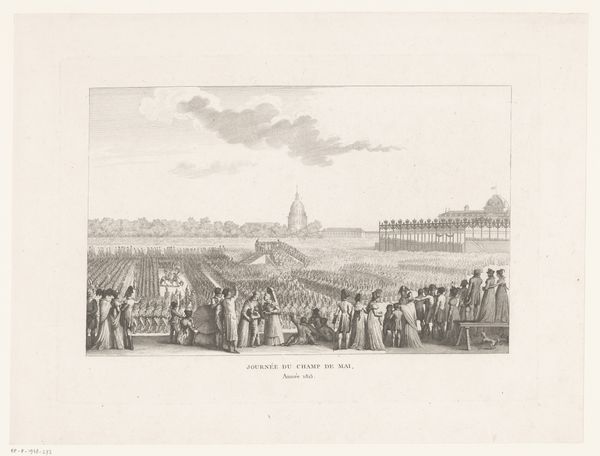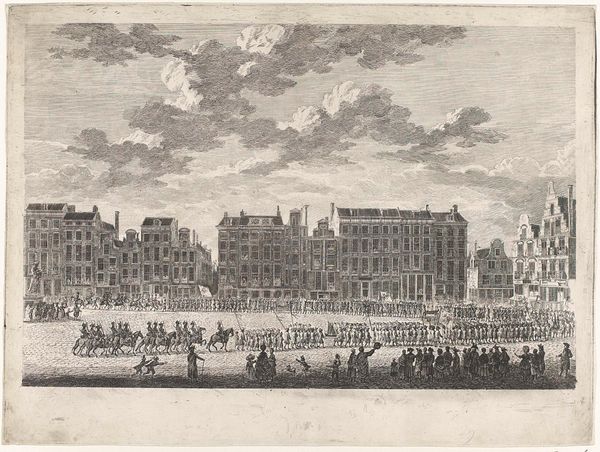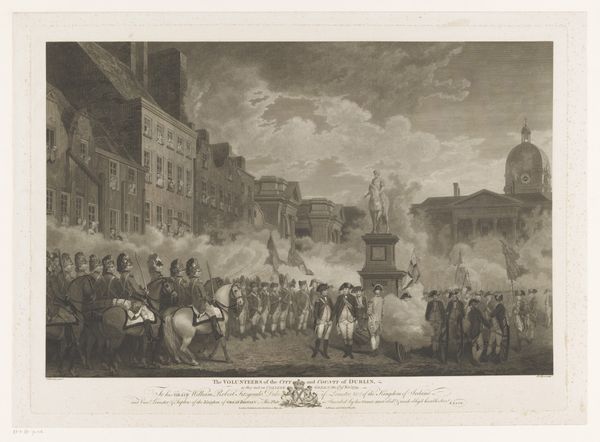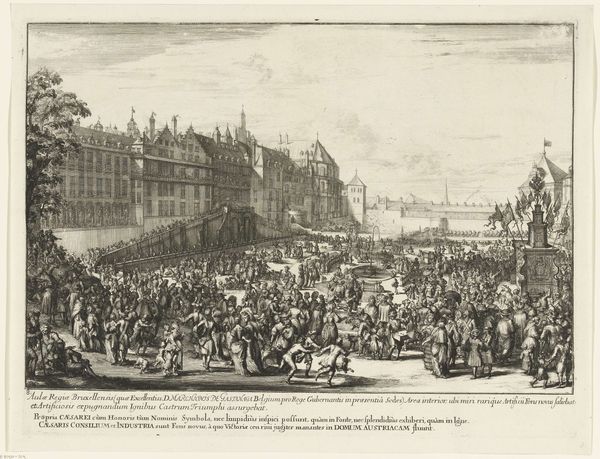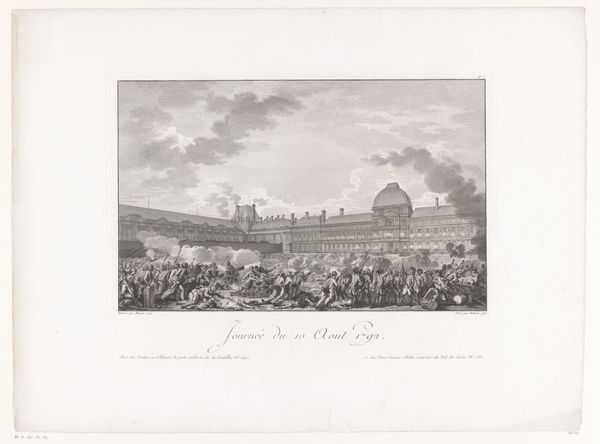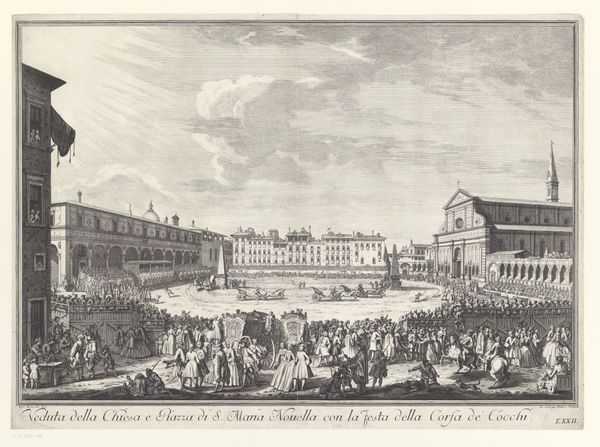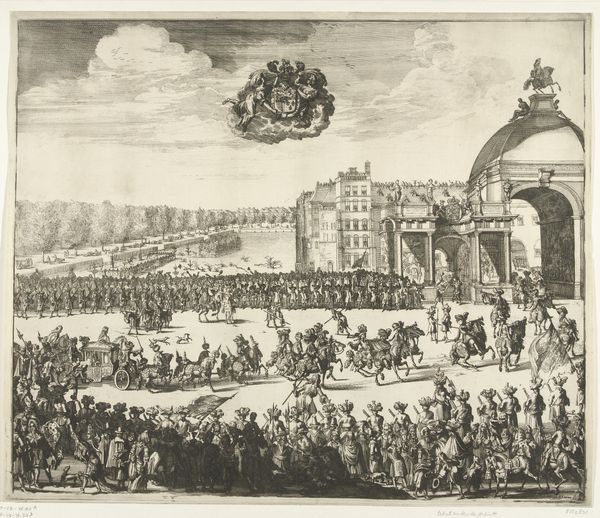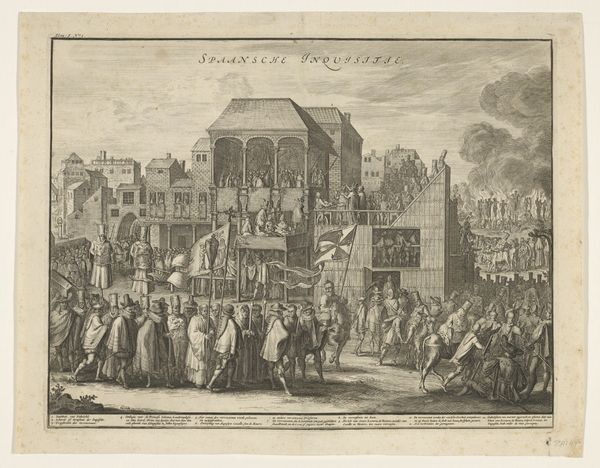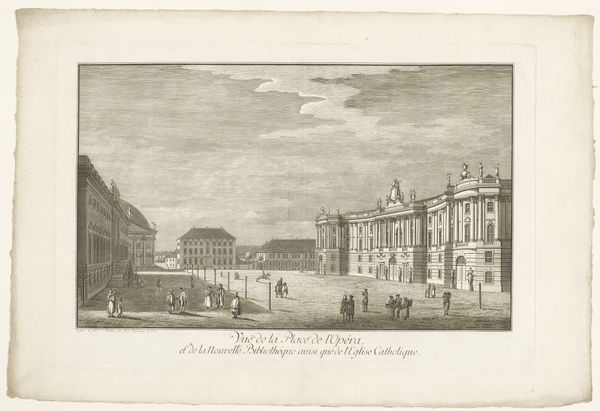
Begrafenisstoet in de Jardin des Tuileries te Parijs 1790 - 1794
0:00
0:00
engraving
#
neoclacissism
#
old engraving style
#
cityscape
#
history-painting
#
engraving
Dimensions: height 351 mm, width 452 mm
Copyright: Rijks Museum: Open Domain
Curator: Editor: Helman's "Begrafenisstoet in de Jardin des Tuileries te Parijs," an engraving from between 1790 and 1794. It's quite striking, this detailed depiction of a funeral procession set against the backdrop of what I presume to be the Tuileries Palace. The smoke and the large crowd make it seem almost theatrical. What stands out to you? Curator: The scale of this print, and the intense labor that went into creating it through the meticulous process of engraving, suggests a real desire to disseminate a specific message widely. This wasn't some quickly dashed-off sketch. What's interesting is how the architecture, specifically the Tuileries, becomes a backdrop to the political theater, manufactured through this funerary rite. Look closely: does the crowd appear somber? What do you make of the emphasis on the pyramid and smoking urns? Editor: The crowd does seem almost too composed, and the focus on the urns and the pyramid feels very staged, almost propagandistic. Was engraving a common method to produce this type of historical images at the time? Curator: Absolutely. Engraving allowed for mass production. Each print is a tangible item consumed by a viewer within a specific socioeconomic context. What’s fascinating is considering who had access to these prints and how the message of the Revolution, particularly its relationship with mourning and commemoration, was being circulated and perhaps controlled through these means. Consider the cost and labor associated. Does that change your perspective at all? Editor: Definitely. Thinking about it as a produced object rather than just an image shifts my understanding. It speaks to how deliberate the construction of public memory could be at the time through relatively reproducible visual forms. The medium isn’t neutral; it’s deeply enmeshed with the message. Thanks for pointing that out! Curator: And vice versa. It’s crucial we recognize how material processes shape narratives. Seeing isn't believing; *making* is!
Comments
No comments
Be the first to comment and join the conversation on the ultimate creative platform.

